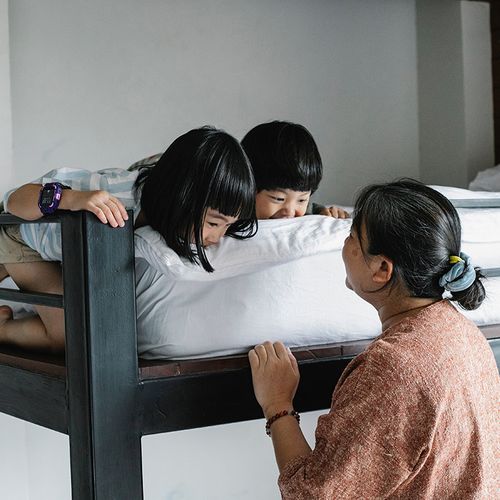Injuries related to use of bunk beds should be a concern for young adults, as well as small children, a new study shows.
Three-quarters of the children who sustain bunk bed-related injuries are age 10 or younger. Surprisingly, however, injuries among young people between the ages of 18 and 21 have risen, noted the study from the Center for Injury Research and Policy of The Research Institute at Nationwide Children's Hospital in Columbus, Ohio.
The study, which estimated that an average of 36,000 bunk bed-related injuries occurred annually over the 16-year period it analyzed, was published in the journal Pediatrics.
"Everyone wants to feel safe and secure while resting or sleeping, yet bunk beds are a common source of injury among children and adolescents," said study coauthor Lara McKenzie, PhD, principal investigator in the Center for Injury Research and Policy at Nationwide Children's "Our study found that bunk bed-related injuries could be severe and require hospital admission In addition to children less than six years of age, young adults have a significantly increased risk of injury from bunk beds in schools, recreational sports facilities and public properties."
Study Results
The study found 18-to 21-year-olds experienced bunk-bed injuries at nearly double the rate of children in the 14- to 17-year-old age group. The researchers speculated this might be because the older age group may use bunk beds more frequently due to the greater likelihood these individuals are in institutional settings, such as college dormitories and the military. The chance of injury from bed malfunction was also significantly higher for older children, possibly because of their larger size and increased weight.
Children younger than age three were 40% more likely to suffer head injuries than older children, probably because their higher center of gravity tends to cause them to fall headfirst.
For all ages, cuts, bruises, scrapes and bone fractures were the most common injuries related to bunk beds, Fractures, while the third most common injury, were nearly six times more likely to require hospital admission, transfer to another hospital or overnight observation than all other injuries.
- Use guardrails on both sides of the upper bunk. The gap between guardrails should be 35 inches or less to prevent entrapment and strangulation.
- Make sure the mattress foundation is secure and the mattress is of proper size.
- Do not allow children under age six to sleep in the top bunk.
- Use night lights to help children see in a dark room.
- Remove hazardous objects from around the bed.
- Place bunk beds a safe distance from ceiling fans or other ceiling fixtures.
